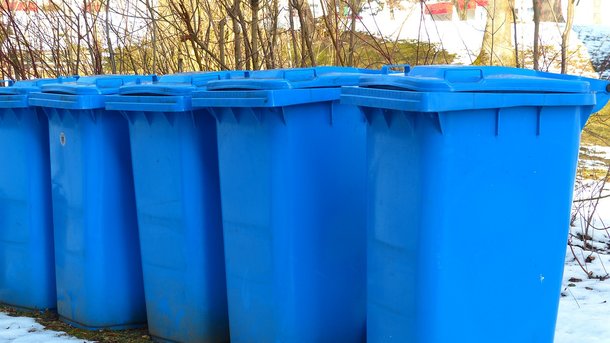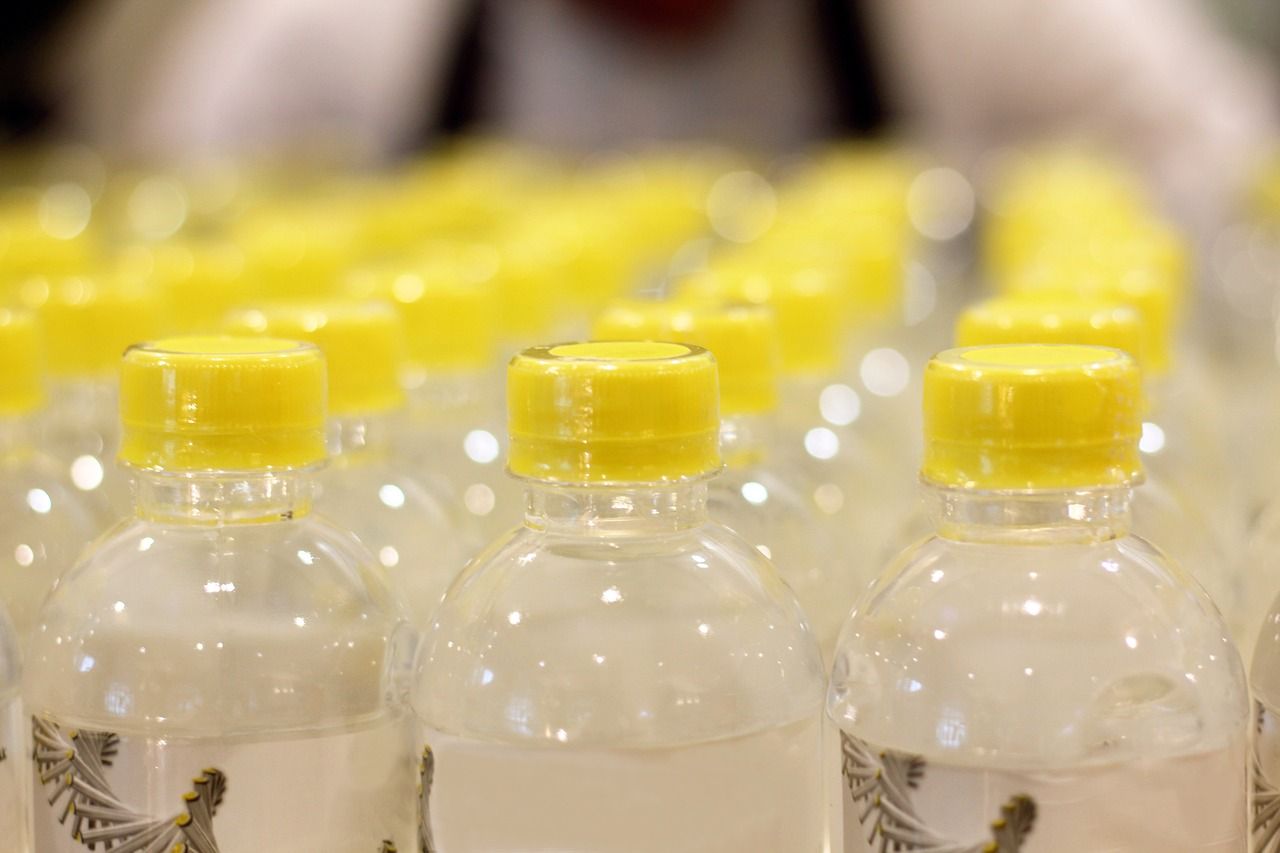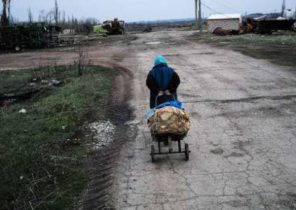
The Ministry of environment of Ukraine in the end of 2016, introduced the first version of the draft National waste management strategy and put it up for public discussion, which will last 1.5 – 2 months.
The document covers seven major waste streams: municipal solid, industrial, hazardous, construction, agricultural, electrical and other, it is based on the standards and approaches of the EU envisaged by the Association Agreement with the EU. This strategy should become the basis for future development of the regulatory base in the sphere of ecology.
On creating the project worked with an interdepartmental working group which structure included representatives of the Ministry of environment, Ministry of economic development, Ministry of regional development, as well as experts of the Federal German company GIZ, EBRD and technical assistance projects of the EU.
The document is very big – about 400 pages. But the section of solid waste (in the document they are referred to as municipal) affects the interests of the maximum number of Ukrainians.
Behavior change
Strategy municipal waste management called “Changing our behavior”. It is designed to 2030 According to the strategy household waste in Ukraine should be perceived as a valuable resource to be managed, not as requiring the solution of a problem. For this purpose it is planned:
- to pay more attention to prevention and to minimize the formation of waste;
- to change the structure of production and consumption, and improve handling of household waste;
- recognize that most waste is a resource, and provided their re-use can reduce the consumption of natural resources and to minimize the impact of waste on the environment.
In the future, Ukraine needs to move away from using landfills as the only way of dealing with them and moving in the direction of sorting garbage, separating it on the threads for re-use, recycling or disposal in the premises of the remaining waste to the regional landfills meeting the EU requirements.
The “polluter pays”: the strategy proposes to impose the costs on manufacturers, distributors, retailers and consumers.
The strategy envisages the development of integrated waste management, using the private sector as both operators and investors.
Integrated waste management encompassing all sources and aspects: education, segregation, transportation, sorting, processing, utilization and removal. Infrastructure to operate the domestic waste needs to fulfil the following aims over the next 14 years:
- preventing a significant part of household waste to landfills;
- the increase in coverage of collection of dry recyclables and 50% in the short term and up to 90% in the long term.
- construction of 20 new facilities processing household waste (waste sorting lines) in the short term and over 18 in the medium term with the use of environmentally friendly technologies as alternatives to landfills, including the establishment of facilities for composting and other biological treatment facilities;
- rationalisation of landfills through sustainable and consistent reduction of their number, which will result in a network of 150 – 250 modern facilities.
The strategy proposes to impose the costs on the polluter, in accordance with the “polluter pays principle”. Each participant in the chain must divide these costs: the manufacturer, distributor, retailer and final consumer.
What you need to work
To date there are no reliable statistics in relation to waste in Ukraine. Systematic studies on this topic do not exist, and the available data are scattered in different sources and reports, and often contradict each other.
According to official statistics, the volume of municipal waste generation in Ukraine in 2015 amounted to 48 million cubic meters, or about 11.8 million tons as only 78% of the population in the country uses the services to collect household waste, the total volume of waste is actually much more.
Environmental awareness in Ukraine is low, with the result that consumption patterns do not consider the impact of production on the environment as a factor when purchasing products. This is also reflected in low use of services for the collection and disposal, waste disposal on landfills, incineration.
In 2015 only of 5.93% of generated waste was recycled, including a 2.73% (1.3 million cubic meters) is burned, 3.2 per cent (1.55 million cubic meters) – is aimed at recycling plants and about 17 thousand cubic meters (0,003%) kompostirovanie. The remainder (about 94%) is aimed at the dumps and landfills.
The main problems of the existing system of waste management:
- the lack of an integrated approach;
- poorly developed inter-municipal cooperation, which creates an imbalance between local governments in favour of large cities and more urbanized settlements;
- the low level of service coverage for waste collection, especially in rural areas, and services for the separate collection – more below;
- a significant role of the informal sector in waste management that prevents the development of the official market;
- a large number of landfills/dumps (almost in every village), which usually do not meet environmental standards, as well as the prevalence of illegal dumping, making the situation virtually uncontrollable disposal of waste;
- low rates for disposal of household waste, which does not encourage separate collection and sorting. Development expenditure not included the provider of the service in the tariff. Not included in it, and the costs associated with the closure of landfills and their remediation.
The basic principles of the strategy
The proposed strategy relies on the established world hierarchy of waste management options in which the priorities are as follows:
Under the framework the EU Directive on waste, “prevention” means measures taken before a substance, material or product become waste. It reduces:
- the amount of waste, including through reuse of products or the extension of its service life;
- the negative impact of waste on the environment and human health;
- the content of harmful substances in materials and products.
The challenge is to develop a National program for waste prevention. It must minimize the generation of waste, as well as takje as long as possible to preserve the value of products, materials and resources for the Ukrainian economy.
In the long term it is planned the rejection of the system of accounting of domestic wastes based on volume in favor of a system based on weight. For such changes you need to organize a network of platform scales, which would entail significant financial implications. To promote the innovations will be a gradual inclusion of platform scales in the new complexes of processing of household waste and transfer stations.
The liability of the manufacturer
Extended producer responsibility (EPR) is a strategic approach, according to which producers assume responsibility – financial and/or physical – for the treatment and disposal of waste consumption. Laying such responsibility could provide incentives to prevent wastes at the source of pollution, to promote environmental design of products and to provide support in achieving goals for the recycling and management of materials at the state level.

By 2022 it is planned to create schema RRR for individual waste streams such as packaging waste and WEEE (waste electrical and electronic equipment), by amending the law On waste and by adopting special laws for packaging and WEEE. Amendments to the law will include provisions requiring manufacturers to cooperate with local authorities to ensure separate collection of packaging.
In the framework of the implementation of the principle of the ROP is planned:
- by 2024 the rate of utilization of packaging waste will reach 60%;
- by 2022 when implementing packaging waste priority should be the implementation of “Deposit-refund” for packaging waste from drinks, particularly of glass bottles;
- by 2022 should be set up at least 50 centers receiving goods and apparel, used and electrical and electronics.
Recycling
Now recycling rate in Ukraine is low. The key problem is the lack of an organized system, capable of conducting effective recycling of high quality. In this area the strategy proposed the following tasks:
- by 2022 the overall rate of recycling of household waste should reach 6% of the total, and by 2030 – 11%;
- 2024 to create in Ukraine a number of pilot schemes for separate collection and recycling wet waste (bio-waste);
- by 2022, the implementation of composting at home should cover 30% of households of Ukraine;
- to 2024 recycle 60% of packaging waste; 60% of glass containers; 23% of plastic packaging; 60% of packaging from paper and cardboard; 50% for metal packaging; 15% of wooden packaging.
By 2022 it is proposed to create a network of reception centres household waste in all settlements of Ukraine with population over 50 thousand people (140). These centers will serve as collection and storage of hazardous household waste, bulky waste (furniture, large household items, etc.), recyclables, WEEE (including batteries), garden waste, construction waste households.
Schedule of tax increase to landfill per ton
Hazardous waste
Inert waste
Now
0,14
0
2017
0,4
0,1
2018
0,8
0,2
2020
1,5
0,3
2022
3,0
0,6
2024
4,5
1,0
2026
7,0
1,5
2028
10
2,0
2030
15
3,0
Final disposal
In this area the strategy will focus on the following tasks:
- to 2024 for the entire territory of Ukraine to create a network of regional landfills;
- by 2022 to prepare plans to bring existing landfills into compliance with environmental requirements, where appropriate, and to implement these plans;
- until 2024 to close the landfills and dumps that do not meet the standards of environmental safety;
- by 2020, to establish a mechanism that will ensure that all costs for construction, operation, closure, reclamation of landfills, maintenance after closing and monitoring the landfill for at least 30 years (including financial guarantees) are covered by the tariffs for the disposal of waste;
- until 2017 to develop a national strategy to reduce volumes of landfilled waste, are biologically decomposed.
Supervision and leadership
Implementation of the policy in the field of waste management will be implemented under the leadership of the Ministry of environment and Ministry of regional development. In matters of the economy they will coordinate with the Ministry of Finance. However, the main economic instrument for the prevention and separate waste collection, that is, user charges of services should be introduced and monitored at the local level.
Indicative cost estimates for key activities of the strategy in € million
Increase coverage of services for the collection of household waste of 77.46% to 84% through 2022
45
A further increase in coverage to 90% of the population of Ukraine till 2030
51,6
The increase in the coverage of separate collection of waste up to 50% of the population of Ukraine until 2022
48
A further increase in coverage to 90% by 2030
72
The creation of 50 centres of goods and products that were in use until 2022
7,5
The establishment of the scheme “Deposit-refund” for glass containers
no data
20 construction waste treatment facilities and sorting lines until 2022
70
Construction of additional 18 systems until 2030
63
The construction of 140 centres waste
21
Home consternee
83,5
Modernization of a waste incineration plant “Energy” in Kiev in the short and medium term (until 2024)
212
150 the construction of modern landfills
1370 14-15 years
Reclamation and closure of existing landfills and dumps
500







